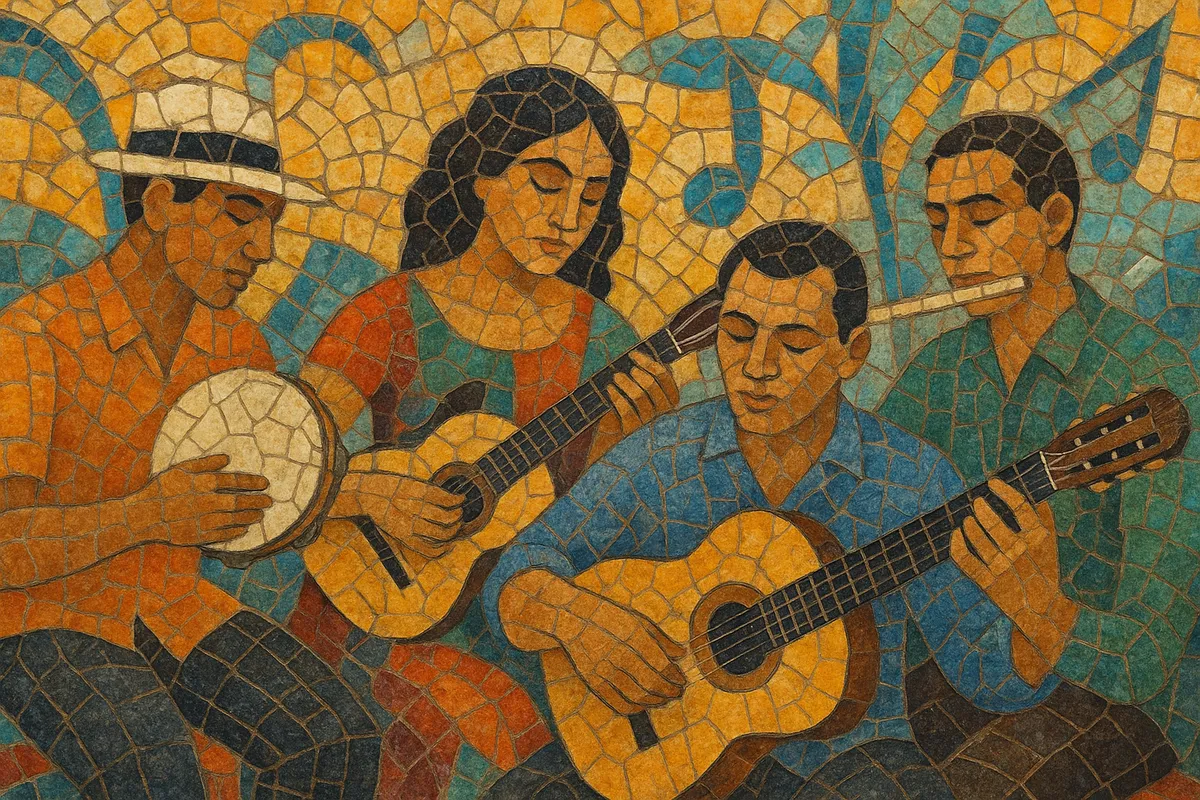Samba-choro is a Brazilian hybrid style that fuses the syncopated groove and songcraft of samba with the virtuosic melodies, counterpoint, and instrumental interplay of choro. Typically in 2/4 at a lively, dancing tempo, it showcases agile melodies over a buoyant pandeiro-driven pulse, with cavaquinho, guitar, flute, and bandolim trading lines.
Emerging in Rio de Janeiro’s golden age of radio and records, samba-choro functions both as a vocal song style and as an instrumental format. Its harmony favors rich turnarounds, chromatic approach chords, and circle-of-fifths movement, while arrangements highlight call-and-response between lead voice (or lead instrument) and a tight regional ensemble. The result is music that feels simultaneously urbane, playful, and nostalgic.
Samba-choro arose in Rio de Janeiro as musicians steeped in choro’s 19th‑century salon tradition blended it with the newer, danceable pulse of urban samba. Early radio, phonograph studios, and “regionais” (choro ensembles) created a setting where sambistas and chorões freely collaborated. The combination kept choro’s intricate counterpoint and ornamentation while adopting samba’s groove, refrain-based song form, and popular appeal.
During Brazil’s radio era, singers and arrangers popularized samba-choro through witty, melodically elaborate songs backed by regional ensembles (guitars/violões, cavaquinho, bandolim, flute, and pandeiro). Composers and interpreters associated with samba and choro regularly crossed over, spreading the hybrid on records, in theaters, and on national broadcasts. The style’s sophistication—tight syncopation, agile melodies, and polished arrangements—made it a hallmark of Rio’s cosmopolitan sound.
Samba-choro’s harmonic richness, lyrical elegance, and small‑ensemble craft fed directly into postwar developments, informing samba-canção’s songcraft, bossa nova’s refined harmony and rhythmic subtlety, and the instrumental fluency of samba-jazz. Its repertoire remains a cornerstone for choro and samba musicians today, and its idiom—light on percussion, rich in counterpoint—continues to shape Brazilian popular music and MPB aesthetics.


